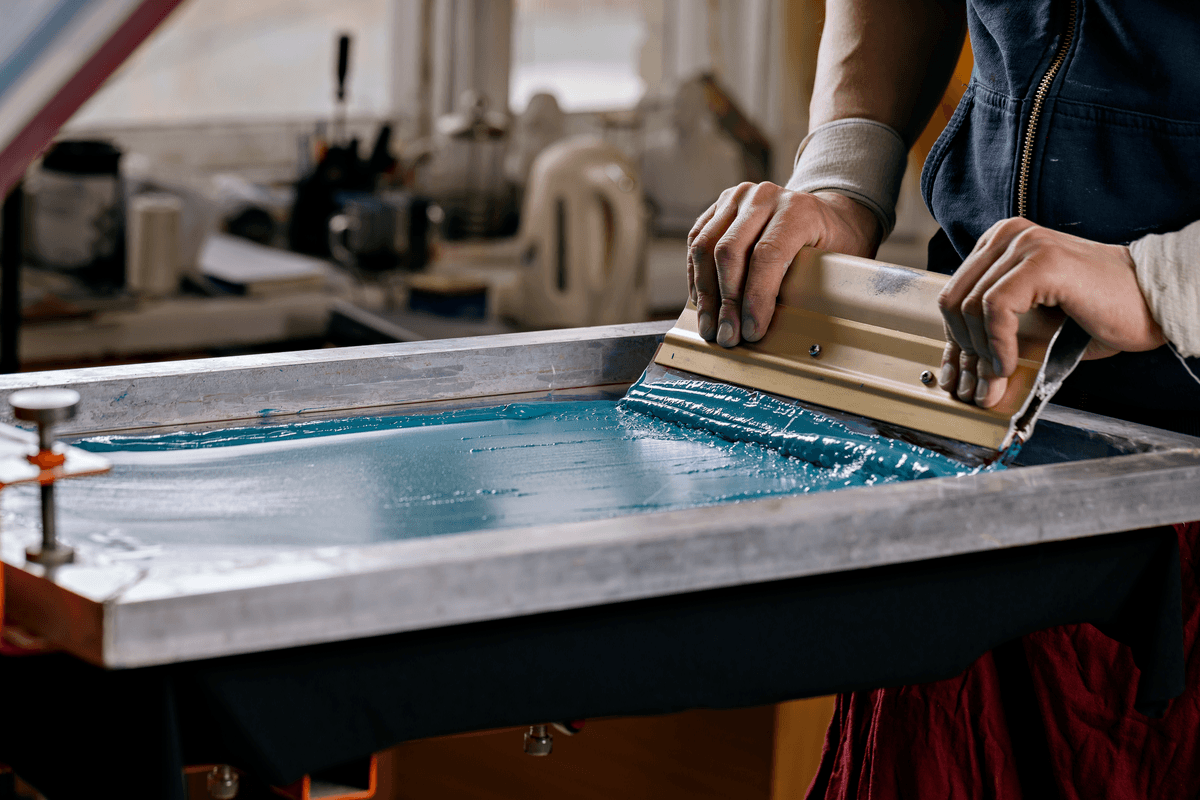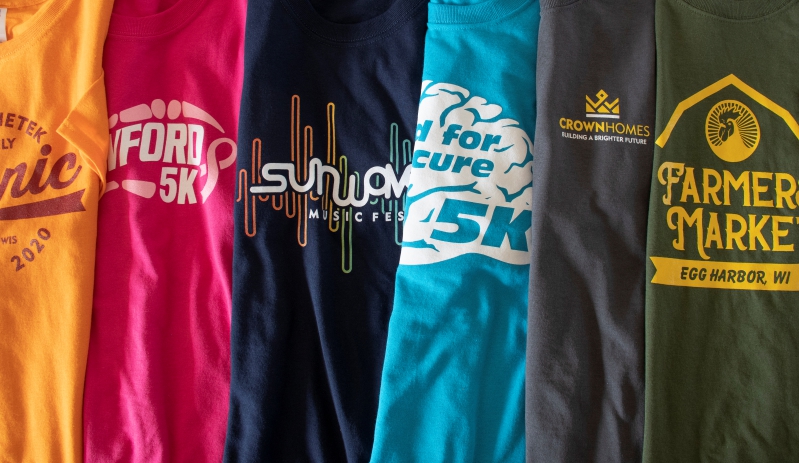Tx Tees for Dummies
Tx Tees for Dummies
Blog Article
Get This Report about Tx Tees
Table of ContentsFascination About Tx TeesWhat Does Tx Tees Mean?How Tx Tees can Save You Time, Stress, and Money.A Biased View of Tx TeesTx Tees Fundamentals ExplainedRumored Buzz on Tx TeesFascination About Tx Tees
That brings your overall to around $1,900 prior to tax obligation and shipping. Build up various other expenses, like the number of energies it takes to run the store and the expense of ink and emulsion per style. embroidery shop. Take the print listed below. This is a one-color image, so the expense of ink per t-shirt is around 20 cents.The solution ought to only be a couple of cents since you 'd just require to layer one display for this job. Exactly how much should you charge per t shirt to make a revenue? Typically, printers try to make up to 45% profit on a print task. Here's a table to aid you determine that: overall price per thing percent of desired earnings as a decimal (example:.25 or.45) profit made per item per job Now allowed's speak about the success of DTF.

With DTF, you can publish a handful of t-shirts, or simply one. Both screen printing and DTF have their particular niches in the world.
Tx Tees - Questions
The best method to know? Ask about and see what print shops like your own are doing. custom cap printing. Try both out and see which you like better
When you're selecting what kind of printing technique to make use of for publishing your art work designs on your garments, it is essential that you recognize the distinctions between these two techniques so you can maximize results while reducing costs. Screen printing is one of the most frequently utilized strategy for printing styles on textiles.
DTG printing is likewise recognized as area or direct to garment printing because it publishes only what is required instead of making a display as screen printers do. https://www.anyflip.com/homepage/fjmtv#About. Display printing works by display filler squeegee screen printing ink display mesh screen, after that transferring the picture to garment making use of heat and/or pressure
The DTG printer utilizes special dye-sublimation inks that are used into a pre-designed photo by an electronic printing system. The inks become part of the material, allowing for vibrant shades and exceptional detail. It's likewise understood as place or direct to garment printing because it publishes only what is required rather of making a screen as screen printers do.
Facts About Tx Tees Uncovered
Initially, it's much faster - you can publish a fullcolor photo in mins, rather than hours for display printing. Second, there's no set up time or costs included - you can print any design you such as, without having to develop a display. Third, there's no waste - since screen printers screen print one layout at a time, they need to screen each shade individually.
The paper is very expensive and can only be made use of as soon as. Once it's printed on, it has actually to be disposed of. - The first acquisition price is lower than the ahead of time financial investment of DTG printers- You can print multi-color layouts one screen each time rather than needing to print each color independently like DTG printing.

The Main Principles Of Tx Tees
Rather of making use of display mesh as screen printers do, dye sublimation printers utilize laser technology to move your pictures onto garments or paper. A heat procedure transfers the dye from its solid-state directly right into the gas stage which consequently integrates it onto textile substratums when they are quickly heated to heats under high stress.
Sublimation printing is eco-friendly. It utilizes less water than screenprinting, and because it does not involve the use of harmful solvents, it's risk-free for all sorts of clothing. The color sublimation inks are additionally unsmelling when healed, unlike display printers that make use of dangerous chemicals during the screen printing procedure that leave behind an unpleasant smell.
They also save cash on pricey tools like exposure devices since dye sublimation printers don't need a UV direct exposure system or a flash treatment oven that is generally utilized in display printing (custom screen printing). What is direct to garment printing (DTG Printing)? DTG printing is a digital screenprinting procedure that prints directly onto textile utilizing specialized inkjet printers
What Does Tx Tees Do?
DTG printing uses lots of benefits over standard screenprinting, including the capacity to publish photo top quality photos, greater shade vibrancy, and the capability to publish designs redirected here on darker textiles. DTG printers function by heating the fabric ink up until it develops into a gas. The gas then penetrates the fabric, bonding with the fibers to create a permanent print.

Screen printers just prepare their display then begin printing until they run out of product or ink.- There is a vast array of skilled screen printers throughout the world, which can be handy for newbies. - It's a slower process - screen printers frequently have to wait on the ink to dry prior to they can print the next color- Screen printers require manual work, so there's a greater discovering contour and it takes longer to produce a top notch layout- Screen printing isn't as precise as DTG printing, so you might obtain some "blood loss" of shades from one component of the image onto an additional otherwise done properly.
The Main Principles Of Tx Tees
Rather of using screen mesh as display printers do, dye sublimation printers use laser technology to transfer your images onto garments or paper. A heat process transfers the color from its solid-state directly into the gas phase which subsequently integrates it onto material substrates when they are rapidly heated to heats under high stress.
Sublimation printing is eco-friendly. It makes use of much less water than screenprinting, and because it does not involve using dangerous solvents, it's risk-free for all types of apparel. The color sublimation inks are also unsmelling when cured, unlike display printers that utilize damaging chemicals throughout the display printing process that leave an unpleasant odor.
They also save money on costly equipment like direct exposure units given that color sublimation printers don't call for a UV exposure device or a flash treatment stove that is normally made use of in display printing. What is direct to garment printing (DTG Printing)? DTG printing is a digital screenprinting procedure that prints straight onto material making use of specialized inkjet printers.
Tx Tees for Dummies
DTG printing provides many benefits over standard screenprinting, including the capacity to publish photo quality images, better color vibrancy, and the capacity to print styles on darker textiles. DTG printers work by warming the fabric ink until it transforms into a gas. The gas then penetrates the material, bonding with the fibers to create an irreversible print.
Report this page